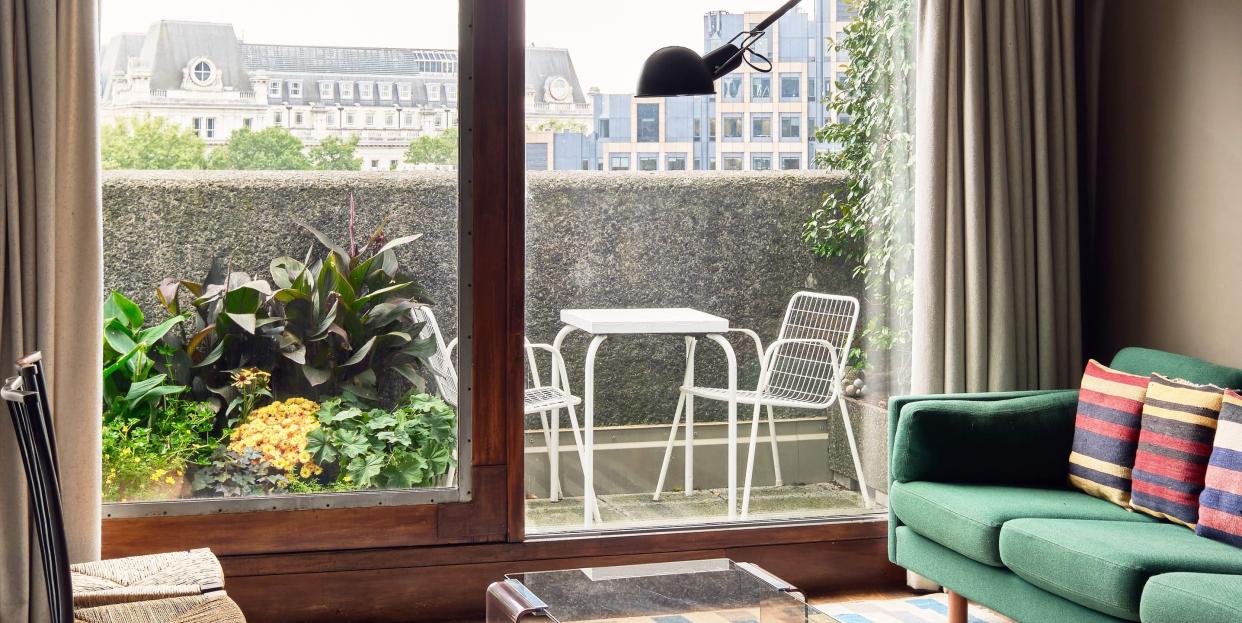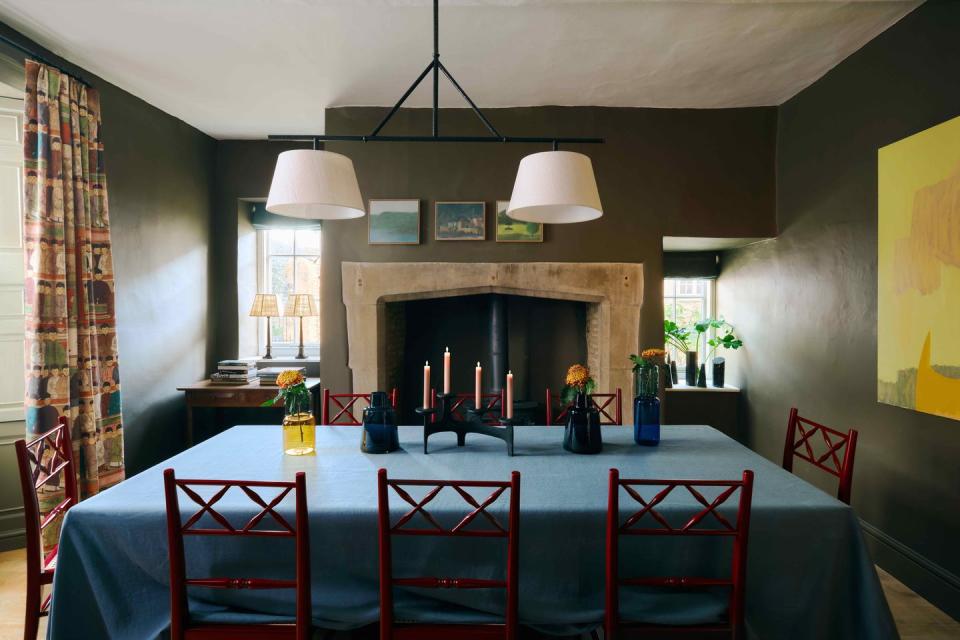Narrative-driven interior designer Tom Morris’s tips for adding individuality to a home

London interior designer Tom Morris is proof that a second career can be just as successful as a first one. For many years, he was design editor at Monocle and wrote for a host of titles including ELLE Decoration. ‘Having written about interiors for so long, I made the decision to switch from the writing-about to the doing-of,’ he says about his move to set up Morrisstudio in 2018.
‘I had an understanding of design, but the technical skills are another thing, so I did a post-graduate evening course. Then a friend of a friend asked me to decorate their new house, and one job led to another.’

Morris credits his childhood love of art and his university degree in art history as influences on his style, which often features painterly colours, a mix of old and new pieces, and references to the arts & crafts movement, California modernism and late 20th-century design (he lives in London’s Barbican Centre, a brutalist icon).
As an ex-journalist, he loves to tell stories through his work. ‘We do a lot of digging, interviewing and research before we even look at anything aesthetic, to help build a narrative,’ he says. ‘It’s quite conceptual and gives something to come back to when creative decisions have to be made – whether it’s an era, a colour palette pulled from a relevant source, or a connection with local history.’
What are his recent projects?
For the past couple of years, Morris has been busy working with the singer Jessie Ware on renovating her Edwardian house. ‘We started at the height of her disco period, so we went all-out on 1970s references,’ he explains. ‘The kitchen was inspired by Nigella Lawson’s stainless-steel space in her early 1990s TV series, mixed with dark wood, 1950s Italian furniture and a custom-made dining table by Matthew Cox.’
The studio has also just finished Barnaby Bars, a shop on London’s St Martin’s Lane that sells artisan chocolate bars, which are made by hand in store (it opens next week!). ‘We’ve done everything from the brand identity to the interior architecture,’ says Morris. ‘The design was inspired by the arts & crafts architecture of Cadbury’s Bournville town, and the aesthetic of the Quaker movement – Quakers traditionally didn’t drink alcohol and, in Victorian times, encouraged chocolate as a treat; hence the rise of Quaker-owned companies such as Cadbury’s. We also added in some 1950s Americana for good measure.’

What is he currently working on?
A Marylebone townhouse for a client who works in fashion (‘She is dedicated to a restrained colour palette, which is fun for us to do’) and a 16th-century Sussex farmhouse. ‘The clients are in the art world and have a wonderful collection of post-war studio pottery and modern British paintings,’ Morris enthuses. ‘The project involves converting an outhouse into a painting studio.’
He says: ‘Coming at interiors as a second career has helped my work. If you don’t know the rules, you’re more likely to create something unique.’ morrisstudio.co.uk
Expert advice
Tom Morris shares his top four ways to add individuality to your home
Textiles are hugely important – not just as upholstery, but as artworks. However beautiful a picture, putting a shiny slab of glass over it can really affect the experience. I tend to use wallhangings instead: quilts, antique clothing, flags. They create such depth. Don’t be precious about how you fix them to the wall – I’ve used everything from bamboo sticks to bulldog clips.
With colour, there are no rules. I lean towards a palette of earth tones perked up with shots of primary colour, but it’s usually intuitive. Knowing when to use white is crucial. For a Georgian townhouse we designed, decorated mostly in moody, drab colours typical of that era, we used pure brilliant white in the basement kitchen. It was such a tonic.
I favour humble, ‘scratchier’ materials such as wood, wool, ceramic and heavy linen. I prefer the honesty and tactility they bring to a home, rather than the plushness of richer materials like velvet or silk.
Bringing things home from your travels is important, but this doesn’t mean only rifling through obscure flea markets. I like tourist tat just as much, as long as it’s taken out of context. I have a collection of studio pottery and it’s hard to tell the difference between a collectible piece and something from a souvenir shop. Just find a red thread – a collection of cups from around the world, maybe?


